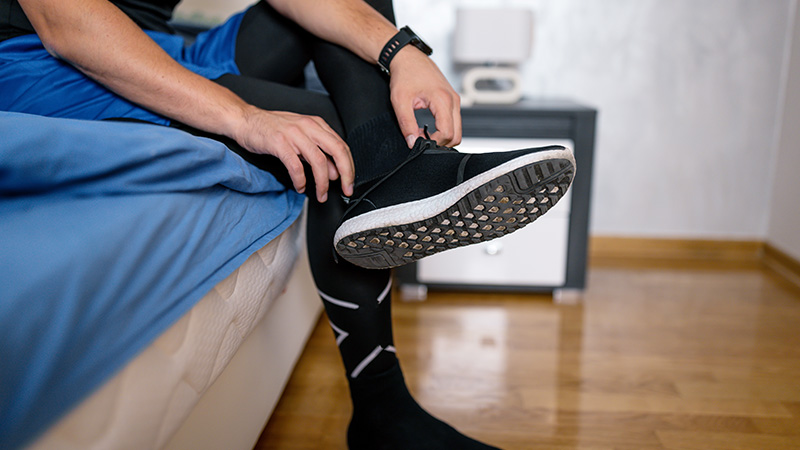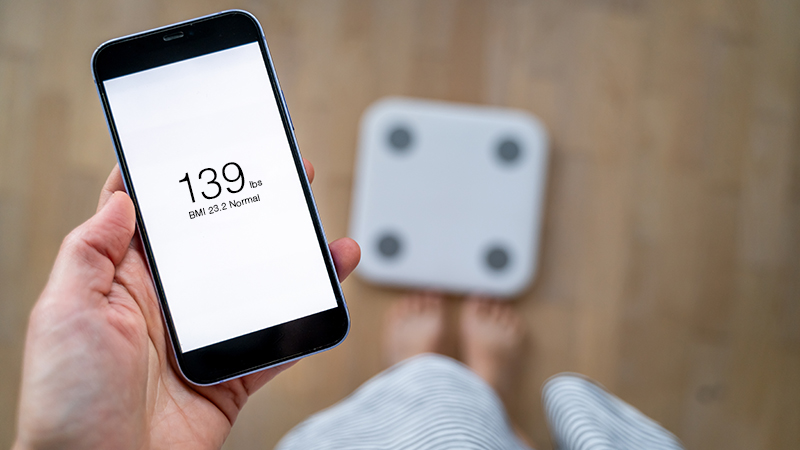How to Beat the Bloat
Why Bloating Happens and How to Prevent It
Updated May 2025
Today, people of all shapes and sizes may find themselves staring down at their waistbands, dumbfounded by a button that so easily clasped just the other day. Bloating happens to everyone, but there are steps you can take to reduce it or even stop it before it starts.
What Is (and Isn’t) Bloating?
Peppermint oil may help bloating associated with meals.— Leila Kia, MD
One common misconception about bloating is that it’s always the result of overeating or excess gas. However, to medical professionals, the definition is more straightforward: “It usually means a visible increase in the size of your belly (abdominal distension) over a short period of time, causing discomfort,” says Leila Kia, MD, a gastroenterologist at Northwestern Medicine.
The Culprits
There are several reasons why you can have an uncomfortable sensation of fullness or swelling in your abdomen. Here’s a breakdown of some of the most common causes:
- Imbalance of bacteria (dysbiosis). Your intestines house bacteria that break down undigested carbohydrates through fermentation. However, when there’s an imbalance, certain bacteria can overgrow in the small intestine and produce excessive amounts of gas, including carbon dioxide, methane and hydrogen. (Fun fact: The average adult’s small intestine measures about 22 feet and the large intestine measures about 5 feet.) This gas accumulation can lead to bloating. Some things that can throw off the balance of bacteria in your gut are:
- Antibiotics. Antibiotics can destroy both harmful and helpful bacteria, creating a temporary imbalance.
- Chronic stress. Stress can cause heightened inflammation that triggers pathogenic (bad) bacteria growth. Over time, this can impact your gut microbiome.
- Smoking and alcohol consumption. Both habits disrupt the balance of bacteria in your gut and increase gas production.
- Prior abdominal surgeries. Removal of parts of your intestine can result in a change in your gut bacteria.
- Increased digestive bulk. Fiber adds bulk to your poop, which is beneficial for regular bowel movements and overall gut heath. However, the added bulk of high-fiber foods like fruits, vegetables, whole grains and legumes can temporarily contribute to a feeling of fullness and bloating.
- Swallowed air. Everyone swallows air while eating and drinking. However, certain lifestyle factors can especially increase your air intake, such as:
- Smoking
- Wearing loose-fitting dentures
- Using a CPAP (continuous positive airway pressure) machine for sleep apnea
Foods and Habits to Watch
By paying closer attention to your eating habits, you can help prevent bloating. Here’s a quick list of food habits that may be sneakily contributing to your discomfort:
- Chewing gum. Your favorite breath-freshening pastime may be the number one cause for feeling bloated. When you chew gum, you swallow air that gets trapped in your digestive system.
- Eating hard candy. Similar to chewing gum, when you suck on hard candy, you swallow air.
- Drinking from straws. When you go to sip a drink from a straw, you suck in a straw-length volume of air.
- Eating too fast. When you eat a large amount of food in a short period of time, your GI system doesn’t have enough time to digest and dispel. A backed-up system creates a buildup of gas and fluid.
- Consuming sugar substitutes. Foods that contain sorbitol, xylitol and mannitol can be difficult for your body to digest, leading to gas and bloating as well as diarrhea.
- Drinking carbonated beverages. Carbonated beverages, including sparkling water, contain carbon dioxide. This is what creates the “fizz.” When you consume these beverages, you are essentially swallowing this gas. While burping does release much of the carbon dioxide, some can also enter your stomach.
- Not eating enough fiber. Fiber is known for “moving things along,” and not having enough of it can lead to constipation and excess gas in your GI tract that can’t escape. An easy way to sneak in fiber is by snacking on fibrous-skinned produce like apples, pears, blackberries and raspberries.
- …or eating too much fiber. While a high-fiber diet is a good thing for your digestive tract, overwhelming your system with too much fiber — particularly insoluble fiber, which is found in grains and vegetables and doesn’t dissolve in water — can produce excessive gas. Drink plenty of water to keep your fiber moving!
More Tactics to Keep Bloat at Bay
Bloating can strike at the worst times — like before a big meeting or a first date. Fortunately, there are proactive steps you can take to minimize symptoms or stop them before they start.
- Stretch out. Including regular exercise in your lifestyle is a great long-term solution to bloating, but for more immediate relief, try stretching your abdominal muscles. Lay on your back and pull one knee at a time toward your chest. This puts pressure on the abdomen to aid digestion.
- Eat consciously. Not only does fibrous produce help aid digestion, but foods like potassium-rich bananas and hydrating watermelon help flush out belly-bloating sodium. Papaya contains high levels of essential digestive enzymes that break down protein to aid digestion, which helps you feel less full. Other natural remedies can also ease digestion: “Peppermint oil may help bloating associated with meals,” says Dr. Kia.
- Hydrate. Dehydration can lead to constipation, which contributes to bloating. When you aren’t getting enough fluids, your body retains water to compensate. But once your body gets the fluids it finally needs, it will let go of the fluids it doesn’t. Adults should drink about six to eight 8-ounce glasses of water each day.
When to Seek Medical Care
Bloating is a part of life and usually isn’t cause for alarm. However, if you have persistent or painful bloating, bloody poop, changes in your bowel habits or weight loss, it is important that you talk with your care team. They may want to order tests to determine the cause, including an X-ray or CT scan of your abdomen, a colonoscopy, an upper endoscopy or blood and stool tests.
“If you notice swelling in other parts of your body — for example, your legs and arms — or increased shortness of breath or chest pains, this may suggest you are retaining fluid, which may require further cardiac or pulmonary testing,” says Dr. Kia.
Learn about the powerful connection between the brain and the gut often referred to as the brain-gut connection.






